Caught by the Camera’s Eye


This image of the church at Winterbourne is one of a group of four photos of churches taken in April and May of 1859. These Gloucestershire churches, including Pilning (next photo), Frenchay, and Almondsbury, all lie within a five-mile radius, and each had been recently built or restored. The late 12th-century church at Winterbourne underwent a massive renovation beginning in 1843. The photographer may have asked these passers-by to pause to lend scale to his composition.
Saint Michael, Winterbourne, England (detail), April 1859, salted-paper print
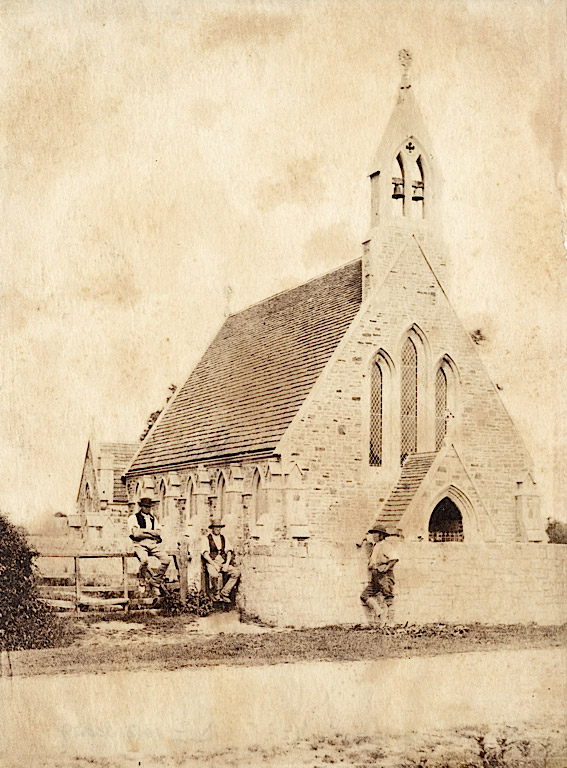

As with Winterbourne (previous photo), the church at Pilning is one of a group of four churches photographed in April and May of 1859. The Pilning church was a new construction completed in 1855. Perhaps these workers were part of the building crew.
Salted-paper prints have a matte finish with the silver image appearing embedded in the fibers of the paper, resulting in a soft focus picture, usually of a pale reddish brown or purple brown color. Waxing the print helped protect the bare paper surface and increased the appearance of detail. Salted-paper prints were gradually replaced in the 1850s by albumen prints.
Saint Peter, Pilning, England (detail), May 1859, salted-paper print
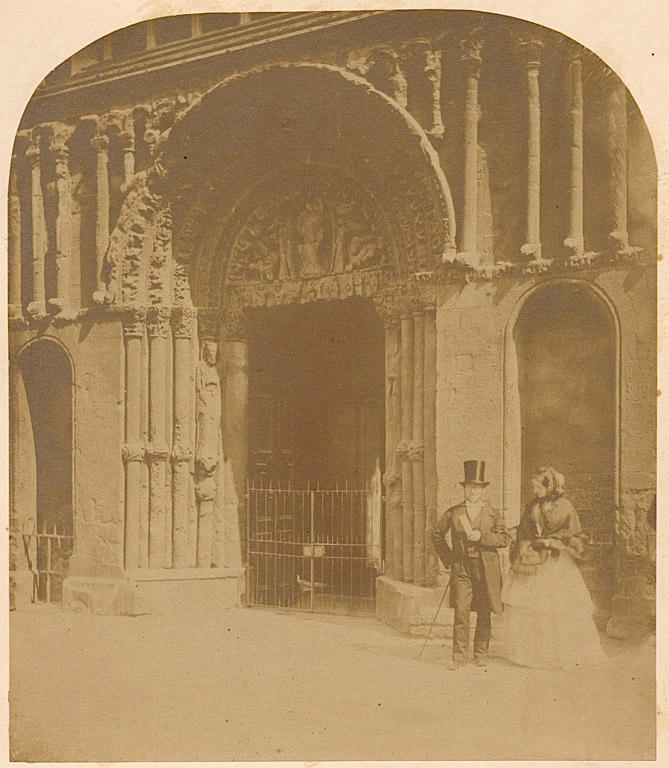
In 1851, Frederick Scott Archer invented the wet plate collodion negative process, which used a glass sheet coated with a layer of clear collodion immersed in a solution of silver nitrate. The collodion glass plate negative shortened exposure time and increased the detail and sharpness of the image compared to the earlier waxed paper negative process.
Frederick Scott Archer (1813–1856), Rochester Cathedral, England, early 1850s, albumen print from wet plate collodion negative
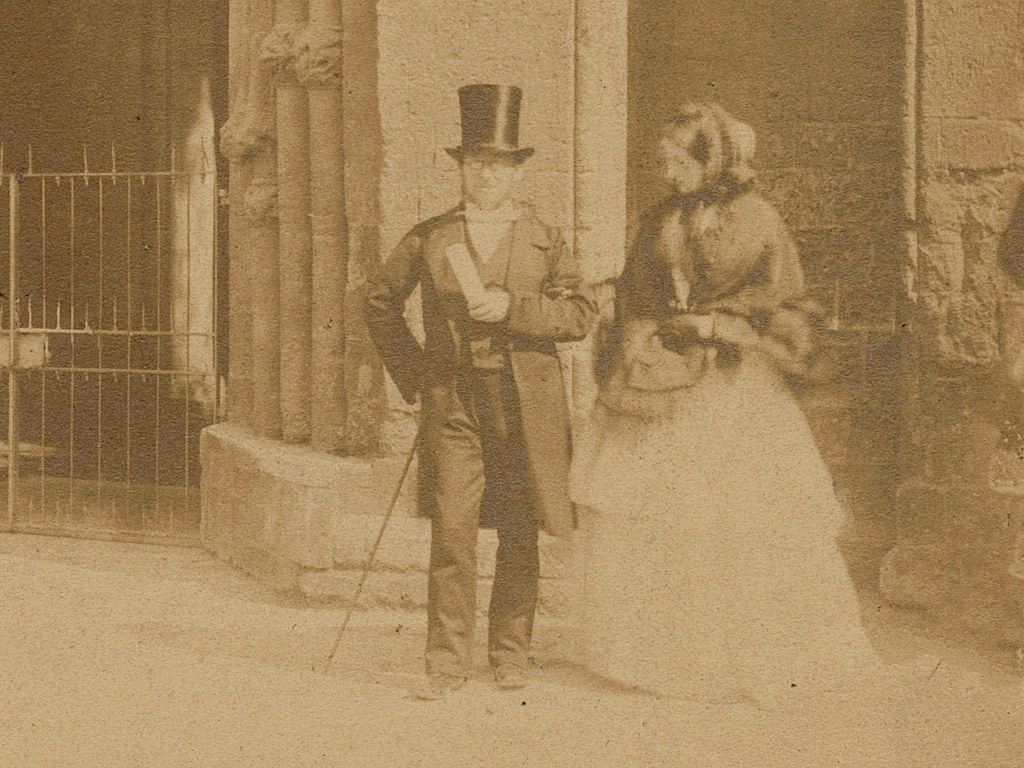
Albumen prints became the preeminent photographic process from the mid-1850s until the advent of gelatin silver prints in the late 19th century. The term albumen refers to the egg whites used as a binder to adhere the silver image to the paper surface. Albumen prints have a similar color to salted-paper prints, but are glossier and have increased detail and resolution.
Frederick Scott Archer (1813–1856), Rochester Cathedral, England (detail), early 1850s, albumen print from wet plate collodion negative


This lovely view of the Magdalen College Bell Tower includes at least nine people strolling across the Magdalen Bridge on Oxford’s High Street or looking down into the river below.
Magdalen College Bell Tower, Oxford, England (detail), 1850s, albumen print

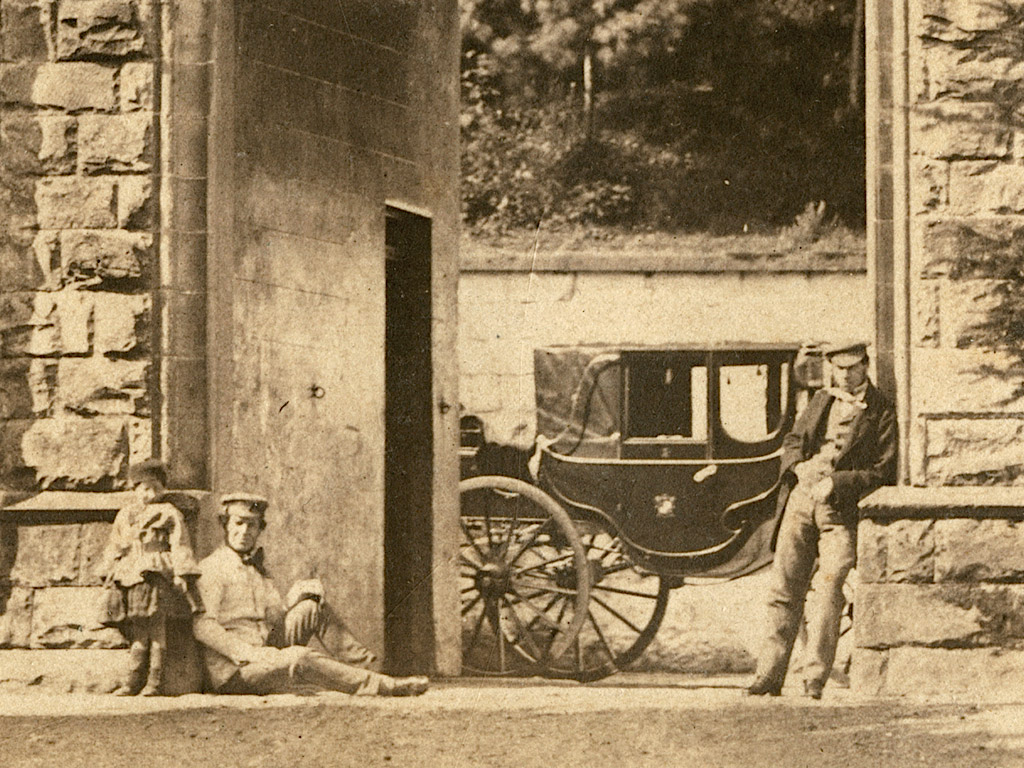
Built in 1792, Tullichewan was the home of Glasgow merchant William Campbell at the time this photograph was made. During World War II, the estate was requisitioned by the Royal Navy. After the war, a former owner returned briefly, but as upkeep costs became increasingly exorbitant, the castle was abandoned and finally demolished by explosives in 1954.
Tullichewan Castle, Gate Lodge, Scotland (detail), 1857, waxed salted-paper print

John Burton (act. 1850s–1860s) and Robert Pateson (1827-1910), Saint Mary, Penwortham, England, 1862, albumen print from wet plate collodion negative

Saint Mary had been recently renovated when this photograph was taken. The three central figures are apparently two workmen and another man, possibly the rector or perhaps the architect of the restoration. Another figure is nearly hidden, leaning against the gate at the right. The photographers Burton and Pateson were active in Lancashire.
John Burton (act. 1850s–1860s) and Robert Pateson (1827-1910), Saint Mary, Penwortham, England (detail), 1862, albumen print from wet plate collodion negative

John Burton (act. 1850s–1860s) and Robert Pateson (1827–1910), Bank Hall, Bretherton, England, 1862, albumen print from wet plate collodion negative

Here the view of the garden is the focus, with the house forming a quietly impressive background. Sadly this house, too, like Tullichewan, was impressed during World War II and never recovered. Abandoned since 1972, Friends of Bank Hall are working to save it from ruin.
John Burton (act. 1850s–1860s) and Robert Pateson (1827–1910), Bank Hall, Bretherton, England (detail), 1862, albumen print from wet plate collodion negative
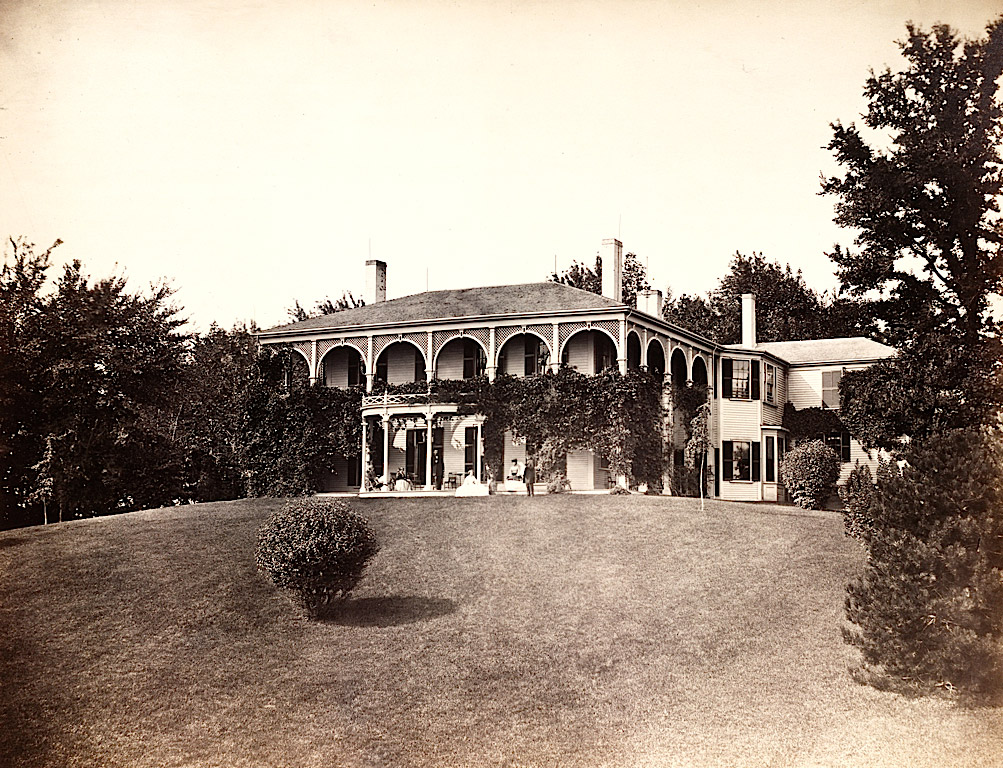

Green Hill was the Gardner family summer retreat in the verdant Boston suburb of Brookline. This group appears to include an early view of Isabella Stewart Gardner (second from right) just a few years after her marriage to John Lowell (Jack) Gardner (far left). Within a few years, Mrs. Gardner had become one of Boston’s most influential art collectors and philanthropists.
Green Hill, Brookline, Massachusetts, USA (detail), 1864, albumen print
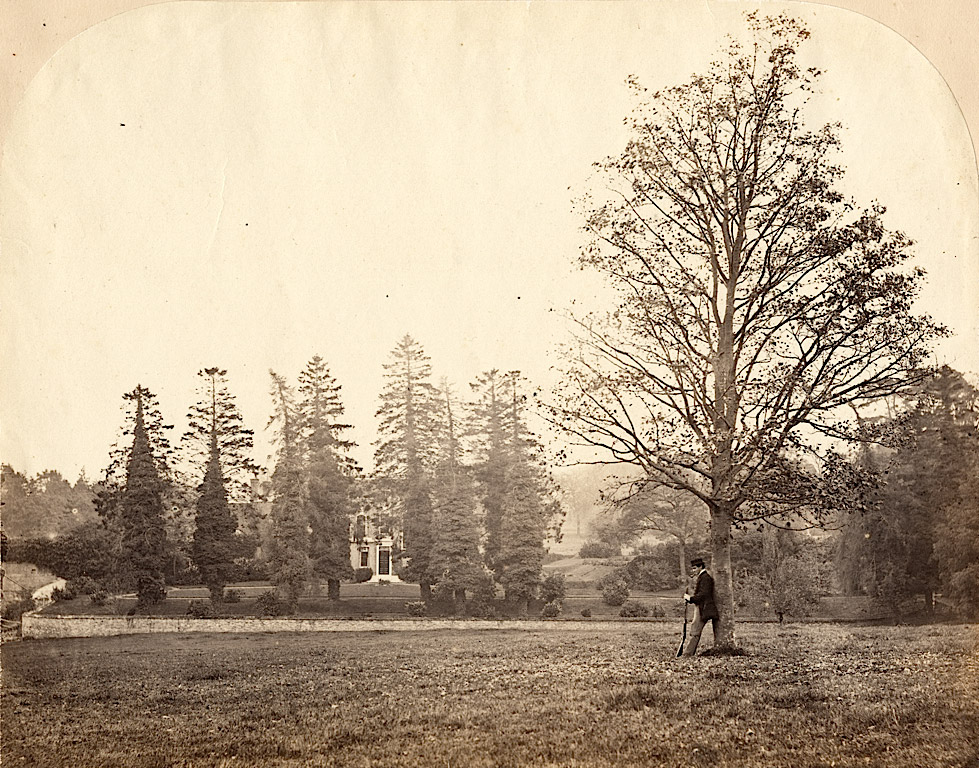

While this artistic composition shows a hunter resting against a tree, the landscape itself is really the subject of the work.
Temple Dinsley, England (detail), 1860s, albumen print

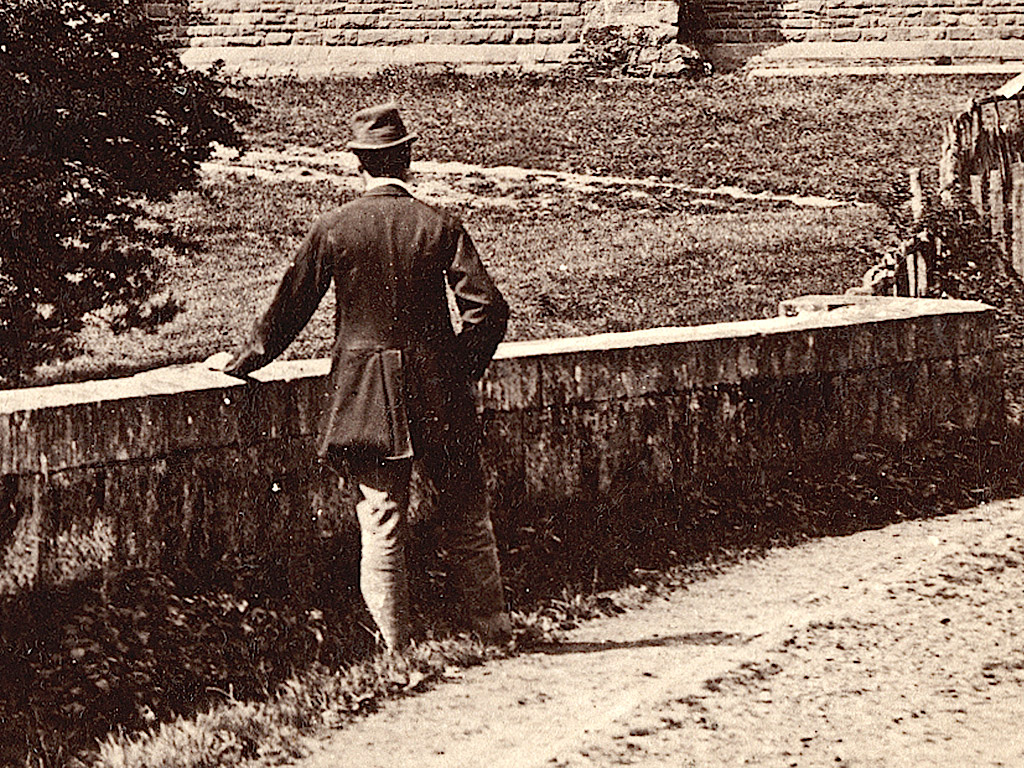
With the rapid expansion of British railroads in the 1840s, more affordable travel was available to a new variety of working class tourists. They enjoyed the seacoast and countryside, touring great houses, castles, and cathedrals along the way. Photographs became standard souvenirs. The romantic ruin of Kenilworth Castle, popularized by Walter Scott’s 1821 novel, Kenilworth, was a frequent subject for photographers, as it had been for painters a generation earlier.
Francis Bedford (1816–1894), Kenilworth Castle, England (detail), 1860s, albumen print
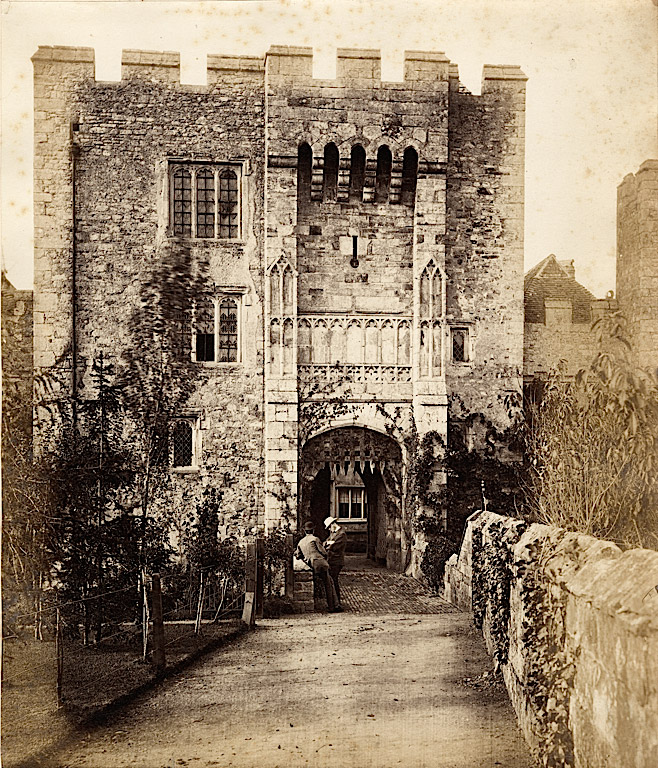
John George Hyde (act. 1860–1880), member of the Amateur Photographic Association, Hever Castle, England, 1860s, albumen print
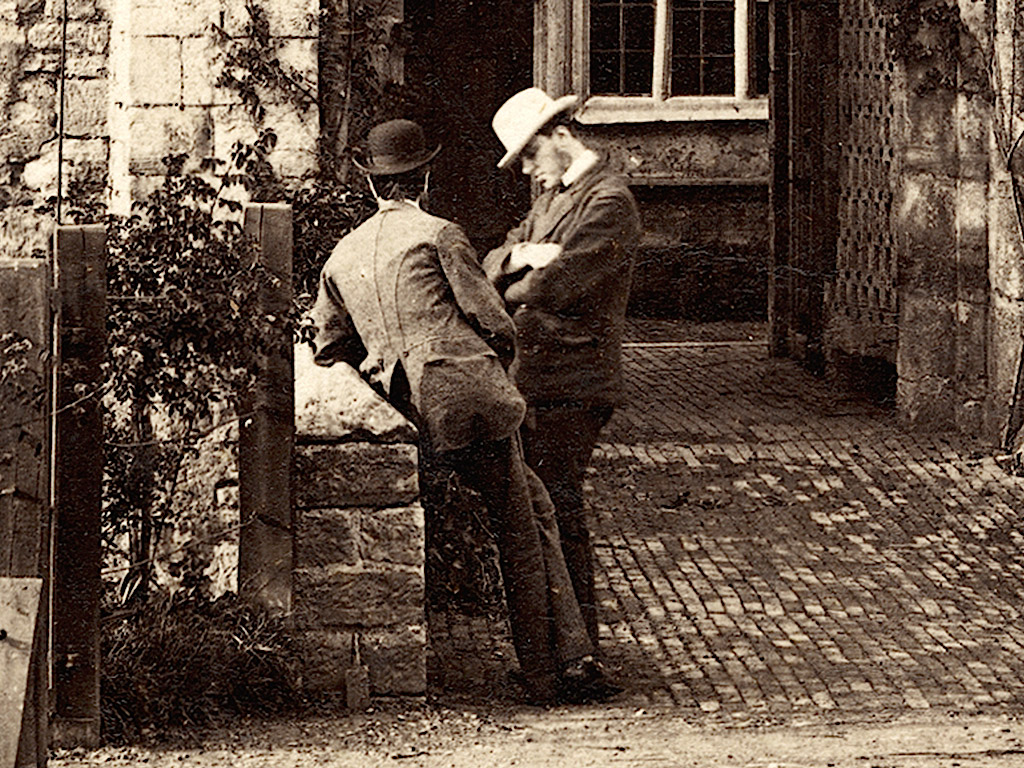
Guidebooks for tourists were commonplace by the mid-19th century. These fellows may be consulting their guidebook for opening times of this venue. Bradshaw's Handbook for Tourists in Great Britain & Ireland of 1858 describes Hever Castle as follows: “Once the residence of the unfortunate Queen Anne Boleyn. . . . many of the rooms present the same appearance as during the visits of Henry VIII. The Castle is still inhabited; it is surrounded by a moat, the entrance embattled and defended by a drawbridge and portcullis. . . . It is open on Wednesdays.”
John George Hyde (act. 1860–1880), member of the Amateur Photographic Association, Hever Castle, England (detail), 1860s, albumen print
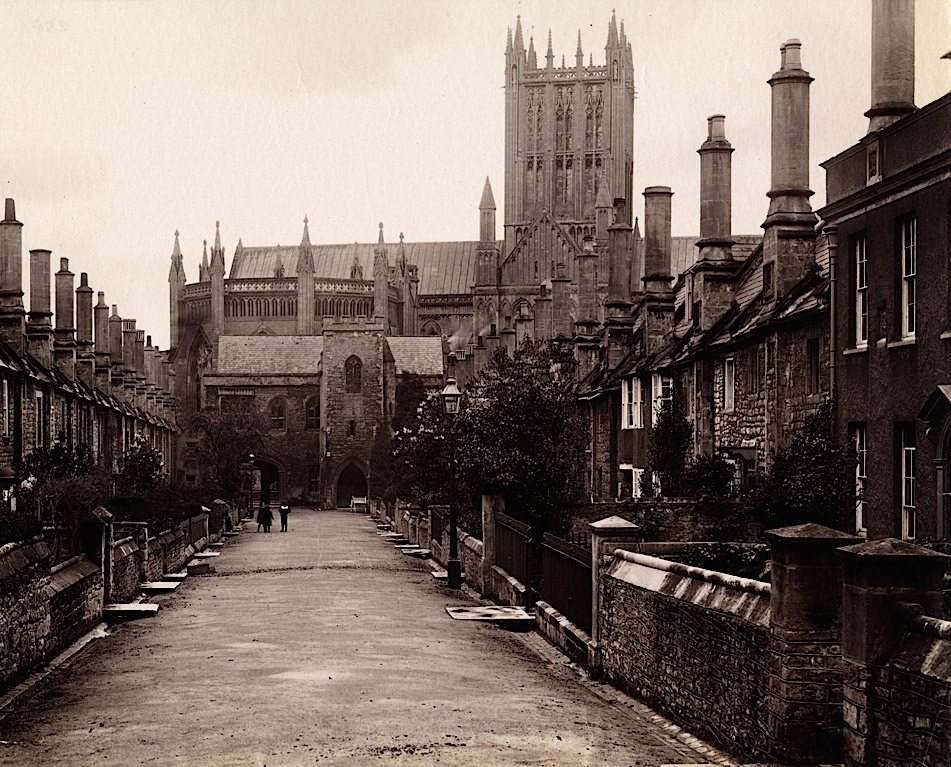
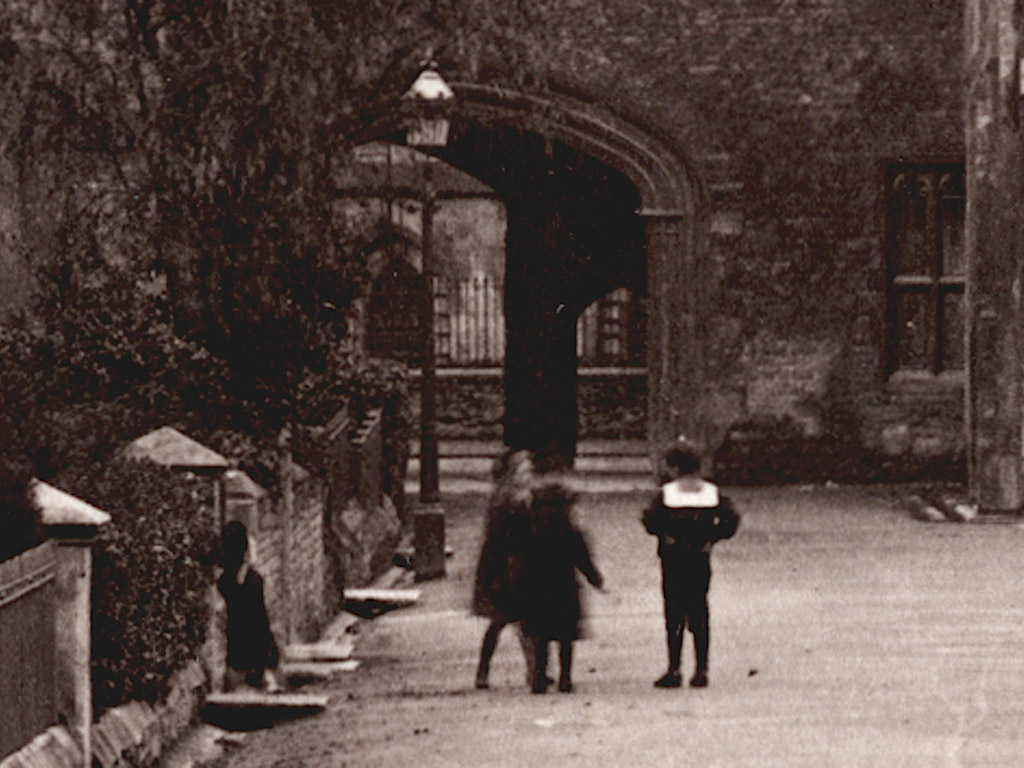
This image shows children at play in the Close. The residences along Vicars’ Close were built between 1363 and 1412 to house the chantry priests of the adjacent Cathedral. Of the original 42 houses, 27 survive today, some of which are still home to the Vicars Choral.
Vicars’ Close, Wells, England (detail), 1860s, albumen print
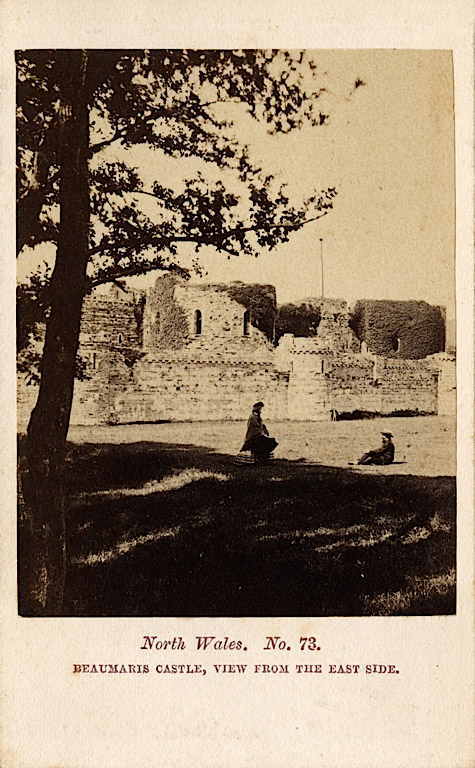
Francis Bedford was a respected commercial photographer of landscape and architectural views and a founding member of the Royal Photographic Society. At Queen Victoria’s request, Bedford accompanied the Prince of Wales as the photographer for his tour of Egypt and the Near East in 1862. Here we see one of Bedford’s Welsh views.
Francis Bedford (1816–1894), Beaumaris Castle, Wales, 1860s, albumen print carte de visite
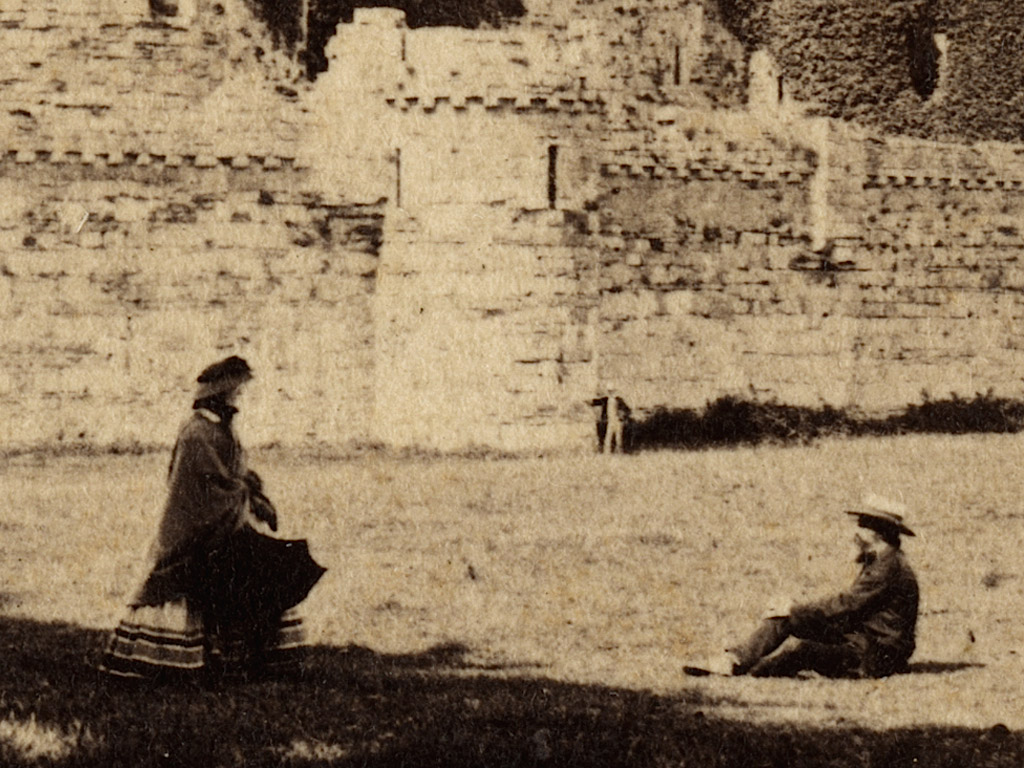
Early tourists appear in this carte de visite. Note the third person in the far center background. Cartes de visite were small albumen prints mounted on 2.5 x 4 inch cards, which were the size of then-popular calling cards. The carte de visite format was patented by Parisian photographer André Adolphe Eugène Disdéri in 1854, and his portraits of Emperor Napoleon III made the format a huge success. While predominantly used for portraits, cartes de visite of major monuments and tourist locales were also common.
Francis Bedford (1816–1894), Beaumaris Castle, Wales (detail), 1860s, albumen print carte de visite


One of the four main gatehouses, or “bars,” along York’s walls, Micklegate (from the Old Norse “mykla gata” or “great street”) was the traditional ceremonial gate for monarchs entering the city. In this photo, local children loiter near the gate at left, and passing beneath the arch appears the ghostly figure of a cart and driver.
G. Willis (act. 1860s), Micklegate, York, England (detail), 1860s, albumen print carte de visite
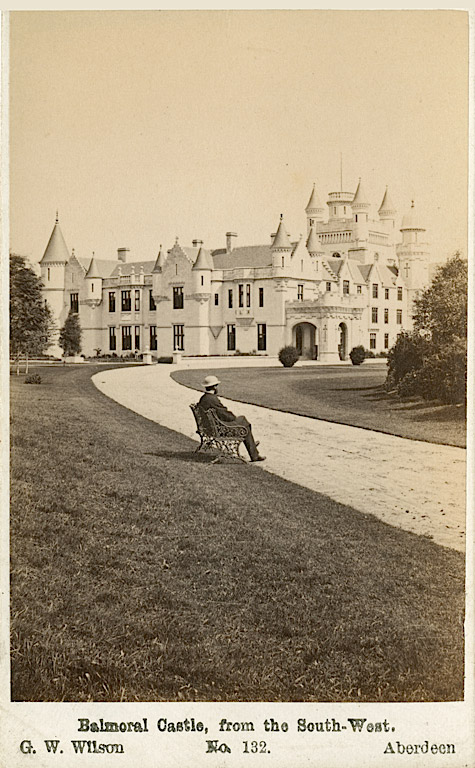
George Washington Wilson (1823–1893), Balmoral Castle, Scotland, 1860s, albumen print carte de visite

When construction began on the new castle at Balmoral in 1854, Prince Albert chose Scottish photographer George Washington Wilson to document the work. Wilson subsequently became portrait photographer to the royal family, and in 1873 he was officially appointed “Photographer Royal” to Her Majesty Queen Victoria. The castle gardens were private until well into the 20th century, making the view in this carte de visite of great interest to tourists and armchair travelers alike.
George Washington Wilson (1823–1893), Balmoral Castle, Scotland (detail), 1860s, albumen print carte de visite

Located north of the American Falls and within sight of Horseshoe Falls, this suspension bridge officially opened on January 2, 1869. Note this portrait of a photographer, posed here with a camera. The card was published by the notorious entrepreneur and sometime photographer Saul Davis.
Saul Davis (act. 1860s–1870s), New Suspension Bridge, Niagara Falls, Canada, c. 1869, albumen print stereograph

Stereographs (also called stereograms) are double photographs mounted on heavy cards and viewed with a stereoscope to give a three-dimensional impression of the subject. The first portable, three-dimensional viewing device was invented by Scottish physicist Sir David Brewster in 1849, and stereographs became increasingly popular after being displayed at the 1851 Crystal Palace Exhibition in London. Stereographs documenting exotic sites, world events, or famous works of art and architecture were sold at tourist sites as well as in stationery and department stores.
Saul Davis (act. 1860s–1870s), New Suspension Bridge, Niagara Falls, Canada (detail), c. 1869, albumen print stereograph

Captain George Bankart (1829–1903), member of the Amateur Photographic Association, “Inside the Ruins,” Goodrich Castle, England, 1871, albumen print

By the mid-19th century, the picturesque site of Goodrich Castle had become the subject of many paintings and poems and was a well-known tourist destination. This artistic view by Captain George Bankart was exhibited by the Amateur Photographic Association (APA), which was active from 1861 through the 1870s. This and following photographs by APA members appeared in an album documenting the association’s prize winners from 1862 to 1872.
Captain George Bankart (1829–1903), member of the Amateur Photographic Association, “Inside the Ruins,” Goodrich Castle, England (detail), 1871, albumen print

Captain George Bankart (1829–1903), member of the Amateur Photographic Association, Haddon Hall, England, 1869, albumen print

This interior photograph of the Long Gallery at Haddon Hall shows three individuals, perhaps visitors, since they are wearing coats and hats. Interior photography required long exposure times and was tedious for the subjects who had to sit entirely still in order not to appear blurred. Early portrait photographers often used head rests keep the sitters’ heads imobilized. Here, the visitors were fairly successful holding their poses; only their faces are a bit blury.
Captain George Bankart (1829–1903), member of the Amateur Photographic Association, Haddon Hall, England (detail), 1869, albumen print
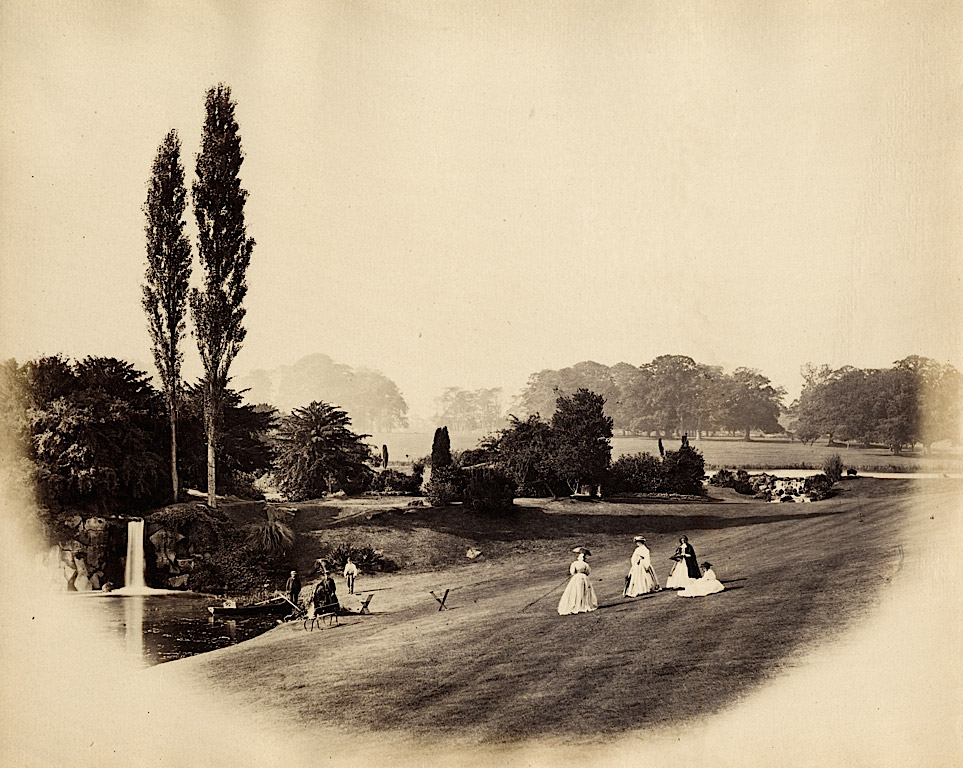
J. Clerk (act. 1850s–1860s), member of the Amateur Photographic Association, Arbury Hall, Nuneaton, England, 1869, albumen print
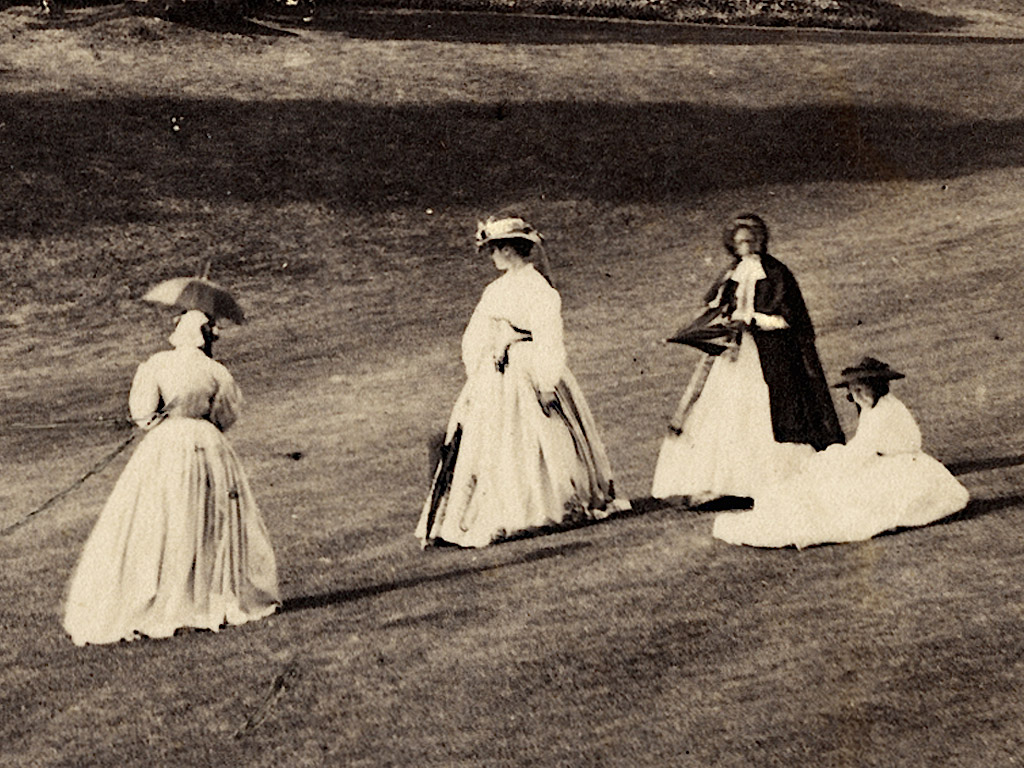
Photography was often used by those who could afford it to document their homes and pastimes. Here we see an outing at Arbury Park, with ladies in summer attire.
J. Clerk (act. 1850s–1860s), member of the Amateur Photographic Association, Arbury Hall, Nuneaton, England (detail), 1869, albumen print

The gentlemen seem to be considering a boat ride across the lake.
J. Clerk (act. 1850s–1860s), member of the Amateur Photographic Association, Arbury Hall, Nuneaton, England (detail), 1869, albumen print
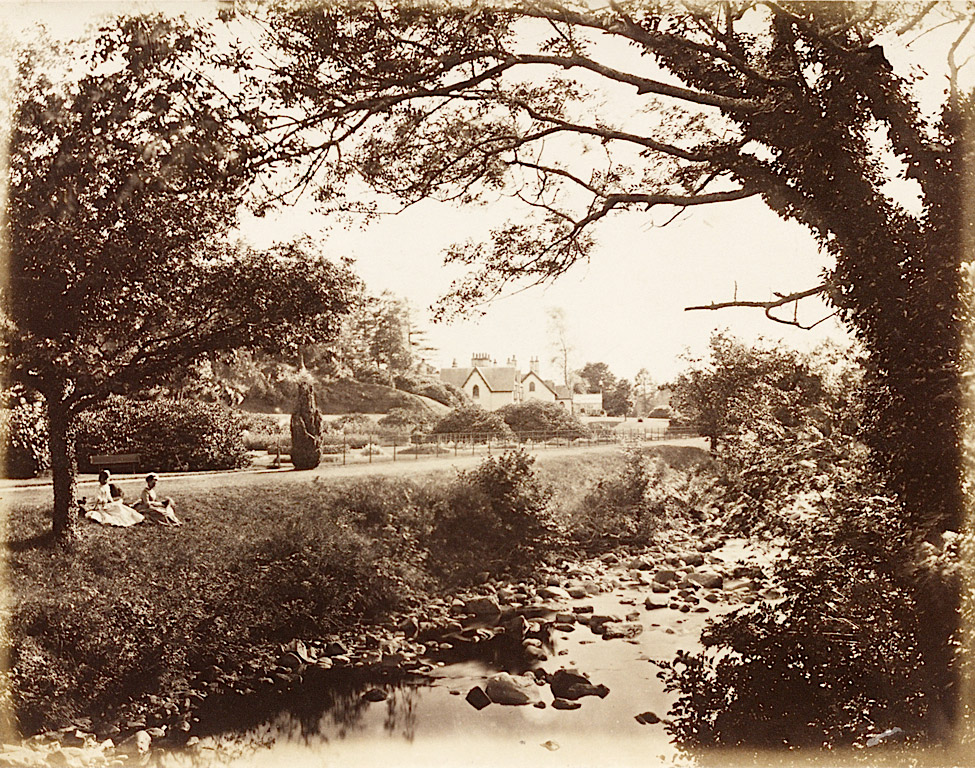
Marchioness of Anglesey (probably Sophia Eversfield Paget, 1825–1901, wife of the 3rd Marquis of Anglesey), member of the Amateur Photographic Association, “At Cumloden,” Cumloden House, Newton Stewart, Scotland, 1871, albumen print

Photography was a fashionable hobby for the upper classes, as this scene captured by the Marchioness of Anglesey for the Amateur Photographic Association exhibition attests. “Amateur” referred to the members’ love of photography, as well as to the “less than professional” connotation the word carries today. Many members of this society were military officers or nobility; indeed the Prince of Wales was Honorary President of the Association in 1862.
Marchioness of Anglesey (probably Sophia Eversfield Paget, 1825–1901, wife of the 3rd Marquis of Anglesey), member of the Amateur Photographic Association, “At Cumloden,” Cumloden House, Newton Stewart, Scotland (detail) 1871, albumen print

The gelatin silver process used gelatin as the binder instead of albumen and became the most common photographic process starting in the early 1880s and continuing through the 1960s, when color film replaced it in popularity. Early printed gelatin images can have a similar color to salted paper and albumen, while developed gelatin prints, common after 1900, are usually neutral black.
High Bridge, Lincoln, England, 1880s, printed-out gelatin silver print
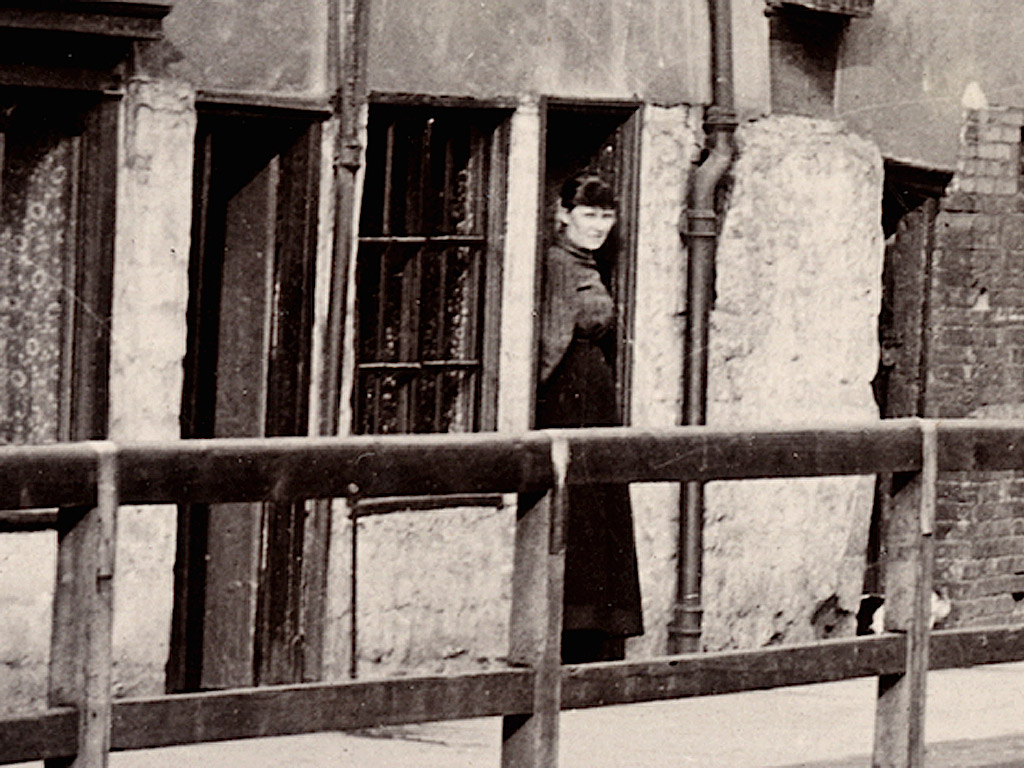
To the left, a woman watches the photographer.
High Bridge, Lincoln, England (detail), 1880s, printed-out gelatin silver print
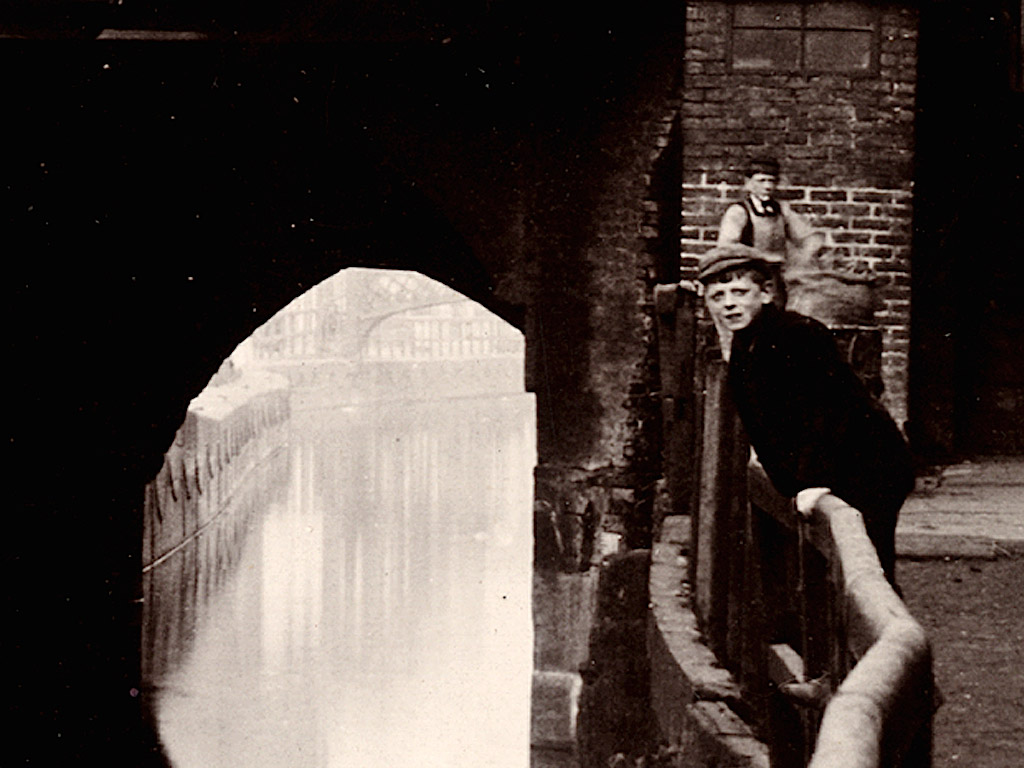
On the right, a boy leans against the railing beside the river. Behind him is an older boy at work. The passage under the High Bridge, called the Glory Hole, was a notoriously narrow channel through which boats had to maneuver to reach the sea.
High Bridge, Lincoln, England (detail), 1880s, printed-out gelatin silver print


Built c. 1170, this house was part of the 12th-century Jewish community in Lincoln and is one of the earliest and most beautiful medieval stone residences preserved in England today. At the time this photograph was taken, a china and curiosity shop occupied the ground floor.
Jew’s House, Lincoln, England (detail), 1880s, printed-out gelatin silver print


Whitehall was built from 1764 to 1769 for Maryland Provincial Governor Horatio Sharpe. Sharpe returned to England in 1773 and did not return. Whitehall was purchased by John Ridout and remained in the family until 1895, so the men shown here may well be members of the Ridout household.
Whitehall, Annapolis, Maryland, USA (detail), 1860s, albumen print

In the early 1870s, new, larger, 4.25 x 6.5 inch cabinet cards began to supplant the smaller cartes de visite. Cabinet cards were popular until the early 20th century, when Kodak’s cameras began to make personal photography the norm.
Robert L. Bracklow (1849–1919), from his Glimpses through the Camera series, Fifth Avenue at 42nd Street, New York, USA, September 1, 1888, albumen print cabinet card
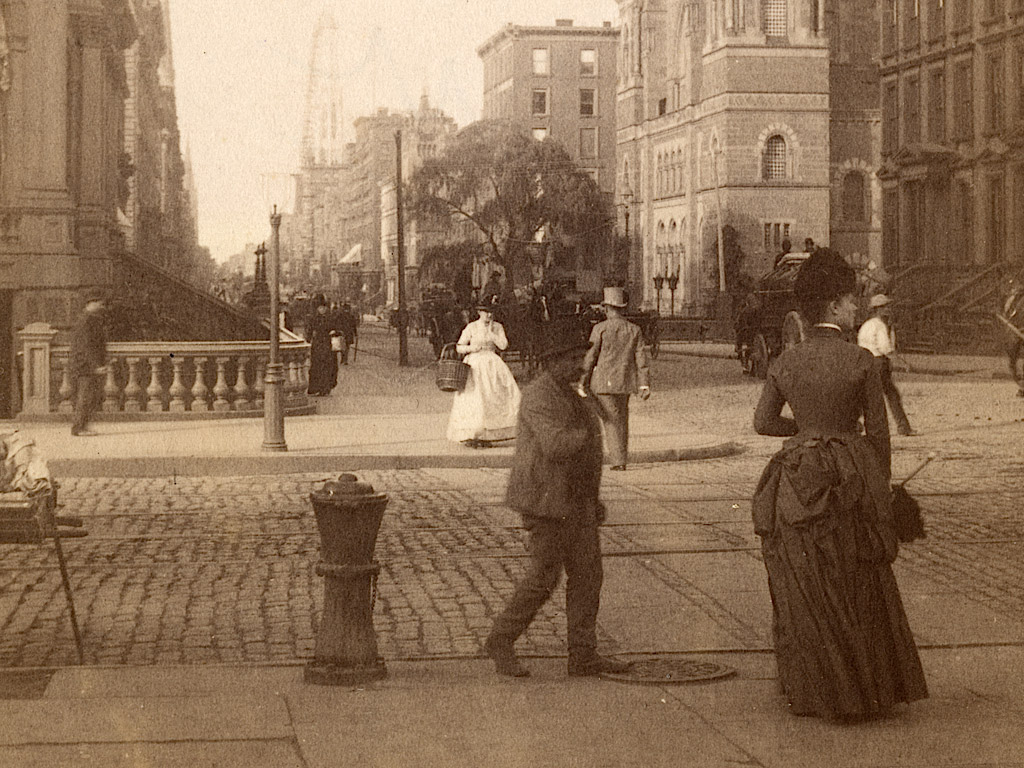
Robert Bracklow was a member of the New York Society of Amateur Photographers which later merged with the New York Camera Club to become the Camera Club of New York under the leadership of Alfred Stieglitz.
Robert L. Bracklow (1849–1919), from his Glimpses through the Camera series, Fifth Avenue at 42nd Street, New York, USA (detail), September 1, 1888, albumen print cabinet card